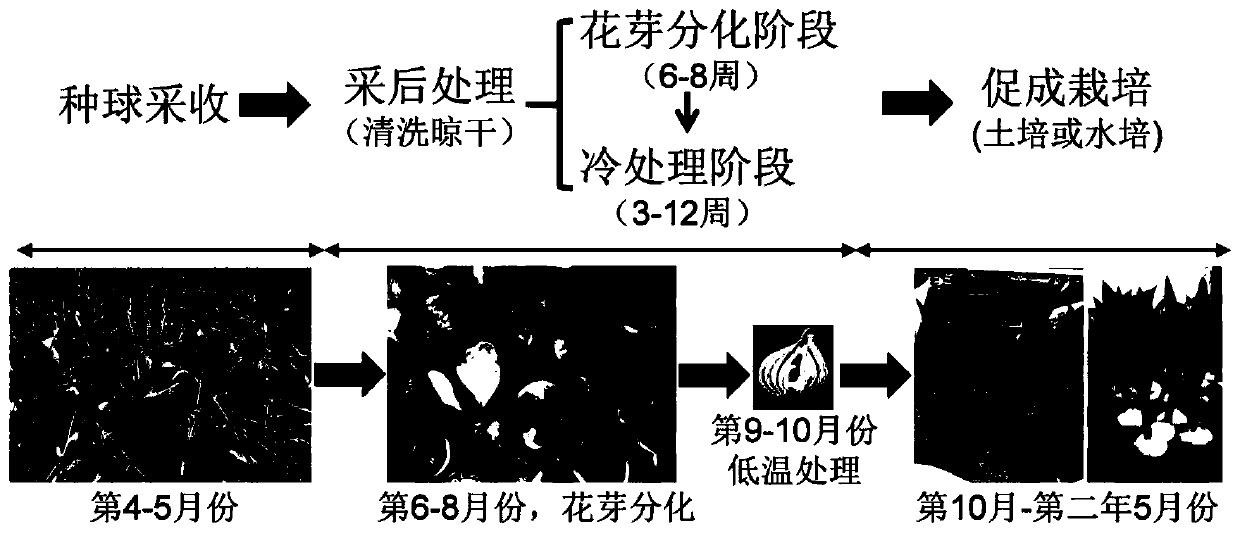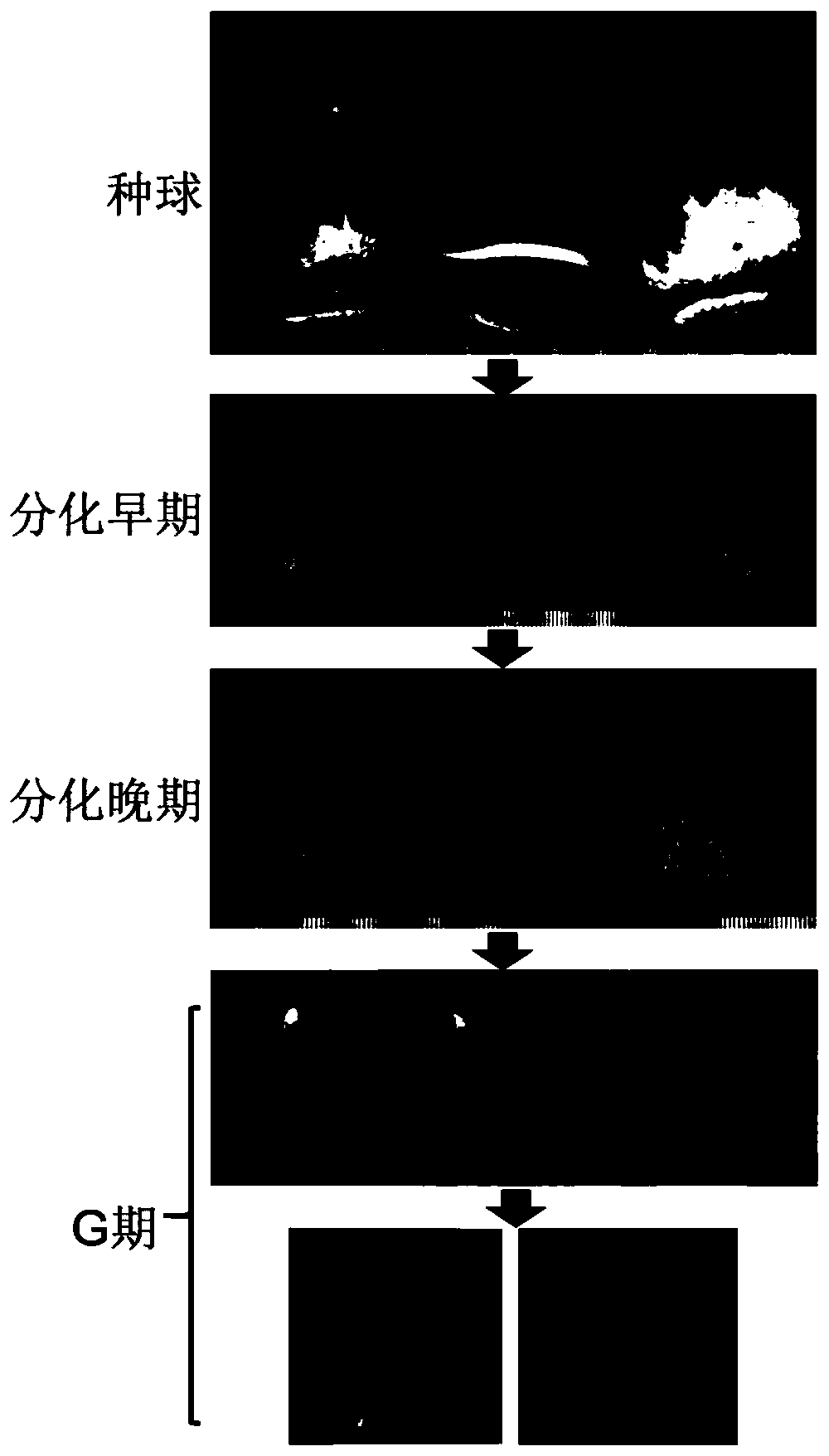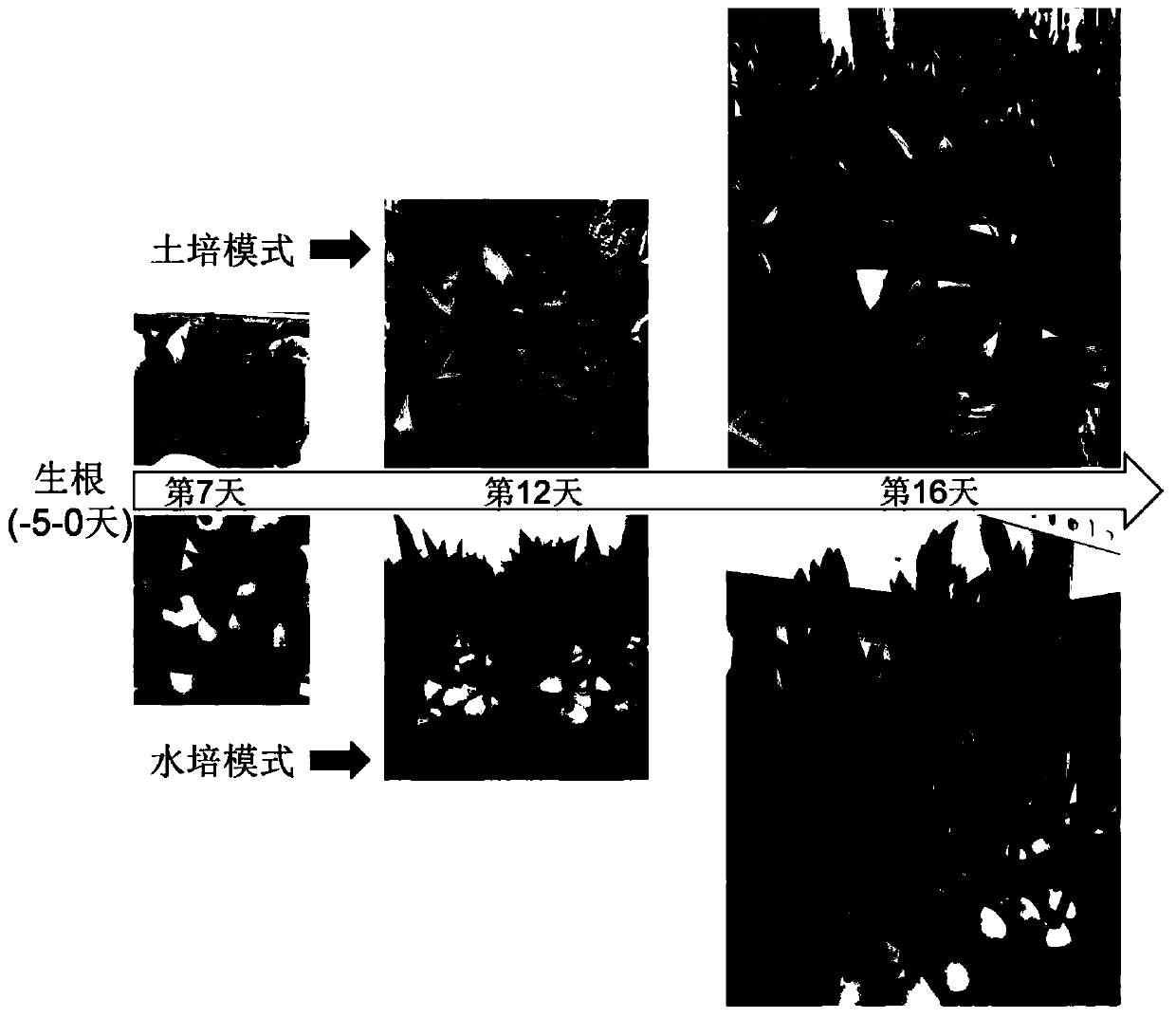Post-harvesting treatment and forcing culture method for seed bulbs of tulipa gesneriana
A post-harvest treatment and cultivation-promoting technology, applied in the fields of seed and rhizome treatment, botanical equipment and methods, cultivation, etc., can solve the problems of lack of understanding of the habit of tulip varieties, incomplete mastery of post-harvest treatment technology, etc., to improve flowering quality and economic value, improve the technical level, save the effect of production cost
- Summary
- Abstract
- Description
- Claims
- Application Information
AI Technical Summary
Problems solved by technology
Method used
Image
Examples
Embodiment 1
[0027] (1) Harvesting and grading of bulbs: Properly control the water of the plants after flowering, so as not to cause the bulbs to rot due to too high soil humidity. Harvest the bulbs when 2 / 3 of the plant leaves are close to withered and yellow, such as figure 1 As shown, and graded according to the size of the bulb circumference (circumference>12cm, first-grade bulbs; 12cm>circumference>11cm, second-grade bulbs; 11cm>circumference>10cm, third-grade bulbs; 10cm>circumference>8cm , four-level ball; circumference <8cm, five-level ball).
[0028] (2) Disinfection of bulbs: Soak bulbs with 1000 times of 50% carbendazim WP or 70% thiophanate-methyl WP for 20-30 minutes, then rinse with water, place in a cool and dry place, and dry Then move indoors for flower bud differentiation.
[0029] (3) Post-harvest treatment of bulbs and flower bud differentiation: Put the bulbs indoors for flower bud differentiation, keep the room temperature at 20-25°C, and air humidity at 60%-70%, an...
Embodiment 2
[0033] (1) Harvesting and grading of bulbs: Properly control the water of the plants after flowering, so as not to cause the bulbs to rot due to too high soil humidity. Harvest the bulbs when 2 / 3 of the plant leaves are close to withered and yellow, such as figure 1 As shown, and graded according to the size of the bulb circumference (circumference>12cm, first-grade bulbs; 12cm>circumference>11cm, second-grade bulbs; 11cm>circumference>10cm, third-grade bulbs; 10cm>circumference>8cm , four-level ball; circumference <8cm, five-level ball).
[0034] (2) Disinfection of bulbs: Soak bulbs with 1000 times of 50% carbendazim WP or 70% thiophanate-methyl WP for 20-30 minutes, then rinse with water, place in a cool and dry place, and dry Then move indoors for flower bud differentiation.
[0035] (3) Post-harvest treatment of bulbs and flower bud differentiation: Put the bulbs indoors for flower bud differentiation, keep the room temperature at 20-25°C, and air humidity at 60%-70%, an...
PUM
| Property | Measurement | Unit |
|---|---|---|
| Circumference | aaaaa | aaaaa |
Abstract
Description
Claims
Application Information
 Login to View More
Login to View More - R&D
- Intellectual Property
- Life Sciences
- Materials
- Tech Scout
- Unparalleled Data Quality
- Higher Quality Content
- 60% Fewer Hallucinations
Browse by: Latest US Patents, China's latest patents, Technical Efficacy Thesaurus, Application Domain, Technology Topic, Popular Technical Reports.
© 2025 PatSnap. All rights reserved.Legal|Privacy policy|Modern Slavery Act Transparency Statement|Sitemap|About US| Contact US: help@patsnap.com



